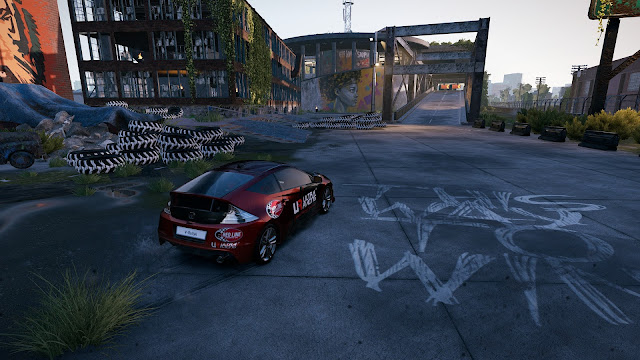It's unfortunate that I should have to tell people to people to avoid this game even though it can be enjoyed somehow. What's presented is a very fun and challenging rally racing game with changing physics for separate event types that keeps the players on their toes, but it's severely ham-stringed by a difficulty setting that is almost impossible to win against when set to the default. It's great for anyone who's a fan of rally racing games but not so much for anyone else.
To those of us who do enjoy the off-road sport, V-Rally 4 is a decent game with solid racing but not much else to speak of. The metagame of managing a team and budget adds a realistic but somewhat unwelcome touch by charging thousands of dollars to maintain operations. It feels very hands off but is unavoidably necessary to upgrade vehicles in order to even stand a chance at a podium finish. Higher level mechanics, researchers, and a PR agents must be added to get better parts and access to higher paying events. Car upgrades come sparsely and are unlocked per days raced as opposed to an XP system, it also forces the player to manage the budget: will a car upgrade help now or would it be better save up for a new car for higher level races? It hardly matters because the AI is constantly overwhelming if not adjusted and even at the default difficulty setting it seems to be hard to keep up even when pushing the cars to their limits. Lowering the difficulty feels no better when things seem to be going well in a race only to somehow find yourself in 9th place at the very end. Lowering the difficulty lowers your overall prize money so the unhealthy balance of risk vs reward has no appeal.
The changing physics happen with each and every race and event type. The rally racing is the most diverse between dry asphalt, snowy roads, sand, and more. Buggy racing hardly feels any different when powering through water or sand but recovering from a large jump can be unpredictable. Gymkhana is on dry asphalt but you're expected to drift through hairpin turns, often times with a FWD car. Hill climb is the fastest on dry asphalt and can be tricky with unexpected turns and no pace notes to guide the player.
The game has a distinct lack of personality and design-wise is very boring. The in-game UI is dull and there is no flare or excitement when pulling off a perfectly executed handbrake turn around a hairpin or landing on all four tires from a jump is met with no excitement or reaction. It features a very basic photo mode that only angles and zooms the camera, nothing more. (The screenshots in this review were taken by me.)
The locales are gorgeous and light rays, grass, water reflections, and dirt clouds make everything look amazing and is the best part of the game. However there's a big lack of variety in regards to the amount of cars and
tracks available and racing the same places over
and over will become tiresome after just a few
hours.
Sound design has taken a hit with each engine sounding different from one another but not very powerful. There is no bass to the backfires, no feeling from the tires squealing, and no reaction from the crowds. Pace notes are accurate but not very detailed for the rapidly-changing rally events, even the co-driver sounds bored and not concerned with the racing. The only music is in the menus is same song repeated each time a race is finished.
If you've beaten the WRC games as well as the DiRT series then you'll find plenty of faults with V-Rally 4 but you may also find enjoyment in the challenge. When compared to the other series it feels like a budget title which is a shame since the V-Rally series, which started as an offshoot from the NFS franchise, has a pedigree as far back as the first Colin McRae Rally on the PS1. It has changed developers and some ideas were gleaned from the others but nothing about this title pushes the limits of rally racing games or makes the player want to play more.
If an XP system that rewarded the player for drifts, speeds, jumps, etc had been added in exchange of team management, it would have given the game it's own personality. It would have added an arcade flair to a sim racing game. Instead it's hindered by copied ideas and a difficulty system that doesn't actually adjust. V-Rally could be better in the future but only time will tell.
Keep Playing














